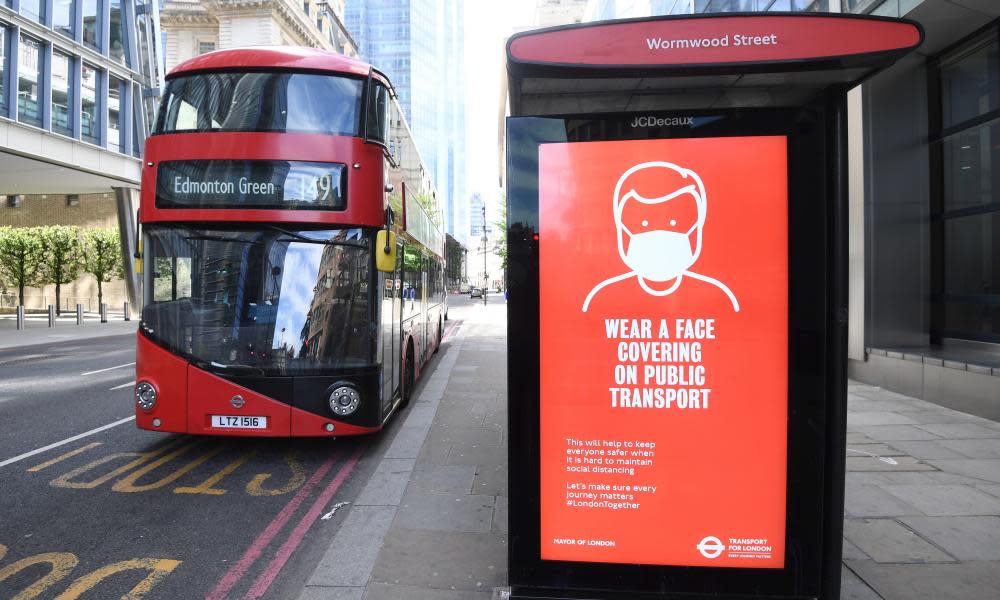Covid-19: R value in England rises to between 0.7 and 1.0

The R value in England has risen to between 0.7 and 1, according to the government’s latest official estimates, with some regions now at risk of seeing a rise in the number of infections.
The latest data suggests the north-west is an area of concern and some local authorities may have R values – the rate of transmission – above 1, at which point the epidemic will begin to grow in these communities.
R, or the 'effective reproduction number', is a way of rating a disease’s ability to spread. It’s the average number of people on to whom one infected person will pass the virus. For an R of anything above 1, an epidemic will grow exponentially. Anything below 1 and an outbreak will fizzle out – eventually.
At the start of the coronavirus pandemic, the estimated R for coronavirus was between 2 and 3 – higher than the value for seasonal flu, but lower than for measles. That means each person would pass it on to between two and three people on average, before either recovering or dying, and each of those people would pass it on to a further two to three others, causing the total number of cases to snowball over time.
The reproduction number is not fixed, though. It depends on the biology of the virus; people's behaviour, such as social distancing; and a population’s immunity. A country may see regional variations in its R number, depending on local factors like population density and transport patterns.
Hannah Devlin Science correspondent
The estimates come as data from the Office for National Statistics suggested Covid-19 cases had fallen significantly in recent weeks, with the number of people infected in England roughly halved in the second half of May.
The snapshot infection survey, covering the last two weeks in May, found that during that period an estimated 53,000 people were infected at any time. This puts the daily infection rate at 5,600 compared with almost 8,000 in last week’s figures.
Peter Benton, the director of population and public policy operations at the ONS, said: “That, we think, is a real reduction in the number of people being infected.”
Previously, the ONS had said the trend looked flat and stable, but as more data has accumulated a downward trend is now evident, the analysis said.
However, Benton said it remained a concern that of those who had tested positive in the study so far, only 30% had reported experiencing any symptoms either when the swab was taken or in the weeks before or after, suggesting that in the majority of cases, people may be unaware they are infected.
“Whilst the rates are going down … we’re still finding about 70% of those testing positive aren’t reporting any symptoms either at the visit when they have a swab or the visit before and after,” said Benton. “It does mean there’s a risk that a number of us might be out and about, positive, infectious and don’t know it.”
Those working outside their homes were found to be three times as likely to test positive, and those working in patient-facing healthcare roles had a six times greater risk of infection.
Keith Neal, emeritus professor of the epidemiology of infectious diseases at the University of Nottingham, said the risk to those in patient-facing jobs was an important finding. “This significantly higher figure suggests that a significant part of the current Covid-19 epidemic may be an infection control issue rather than a series of community outbreaks,” he said. “The control strategies are different in hospitals and care homes, which require infection control, whilst community transmission requires social distancing and contact-tracing.”
The ONS snapshot data appears to show a steeper downward trend than Public Health England reports of new confirmed cases and hospital admissions. Although most regions have shown a downward trajectory, in some areas the trend has only been marginal and the overall reproduction number, R, has been hovering close to 1. The latest analysis by the London School of Hygiene and Tropical Medicine’s modelling team suggests that the current halving rate for the epidemic in the UK is about two months and that nationally R is 0.9-1.
The slight rise in R revealed on Friday is likely to cause some concern.
A key issue is that R is a figure that covers all settings; it does not simply reflect transmission in the community – which is particularly important when it comes to lifting restrictions – but is an overall figure that includes care homes. Experts have previously cautioned that outbreaks in care homes and hospitals may be raising the overall R value.
There are also some differences in R depending upon the source because different research groups calculate the number in slightly different ways. The figure released by the government takes these different approaches into account, and combines the results, yielding a range for the R number.
Experts say that as the overall number of cases reaches low levels, outbreaks will still be seen but R will become less important. That is because in a local outbreak the R value would look high, but the number of infections would be low and the outbreak would be in a small area, and therefore controllable.
However if R rises above 1 and stays there, the situation could quickly become problematic.
The impact of the first wave of relaxation measures around lockdown rules is unlikely to be reflected in the R number until next week.

 Yahoo News
Yahoo News 
